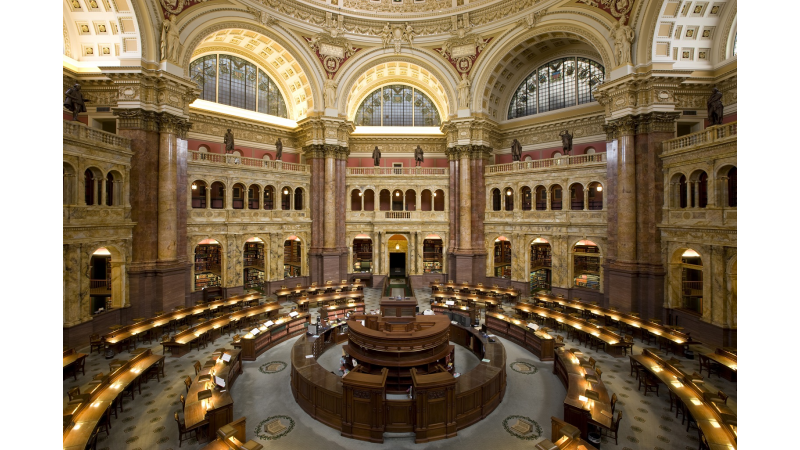 Today is the anniversary of the Library of Congress, created on April 24, 1800, and with the current focus on nonfiction and primary sources in the classroom, they are your go-to digital archive for meeting many of the standards of the Common Core. Below I’ve listed some of the materials that are my favorites, and you can find all of these and much, much more on their website for teachers.
Today is the anniversary of the Library of Congress, created on April 24, 1800, and with the current focus on nonfiction and primary sources in the classroom, they are your go-to digital archive for meeting many of the standards of the Common Core. Below I’ve listed some of the materials that are my favorites, and you can find all of these and much, much more on their website for teachers.
Born in Slavery: Slave Narratives from the Federal Writers’ Project, 1936-1938 : I depended on these interview transcripts during library school for one of my class projects. Particular gems within the LOC’s digital American Memory collection are the audio files from these interviews. Some of the files are hard to hear, however, in my own teaching experience, listening to one can silence the classroom. Hearing an ex-slave’s firsthand account of the institution is a powerful moment. You are accessing auditory learning, and the low recording forces folks to quiet down, in order to hear – icing on the cake! See the LOC’s resource for analyzing oral histories.
American Indian Constitutions and Legal Materials : When you are covering the Native American experience in the curriculum, ‘self-determination’ and ‘sovereignty’ are key concepts to introduce to students. These constitutions are great primary sources, and help students understand regional differences between tribes, as well as how they determine their membership and choose leaders, particularly useful when children are studying the tribes from their own state. They are great resources for a compare and contrast lesson, as well as when preparing for documents based questions. See the LOC’s resource for analyzing books and other printed texts.
Ansel Adams's Photographs of Japanese-American Internment at Manzanar : For visual learners, historical photographs are incredibly useful, and using this collection allows you to introduce students to a famous American photographer as well. From the clothing, to the landscape, to the activities of the subjects, there is a lot to analyze, and these primary resources can also be tied to Language Arts lessons with the text Farewell to Manzanar, by Jeanne Wakatsuki Houston. See the LOC’s resource for analyzing photographs and prints.
The Life of a City: Early Films of New York, 1898-1906 : Having grown up in New York City, these moving pictures are endlessly fascinating, especially since many are the products of Thomas Edison’s film studio. One of my favorites is the short film that shows the sanitation department at work, with horses and carts, dumping garbage off the edge of a pier onto a barge! It’s a great image to juxtapose with their modern tools and trucks. See the LOC’s resource for analyzing motion pictures.
Explore their website, and you will be spending time in one of the greatest libraries in the world!
Image via Wikimedia Commons



